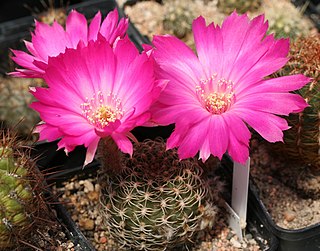
Lobivia backebergii is a species of flowering plant in the cactus family Cactaceae, native to eastern Bolivia and southern Peru.

Haageocereus bylesianus is a critically endangered species of Haageocereus from Peru.

Acanthocalycium thionanthum is a species of Acanthocalycium from Argentina.

Weberbauerocereus rauhii is a species of Weberbauerocereus from Peru.

Oreocereus trollii, commonly known as the Old Man of the Andes cactus, is a species of cacti native to Argentina and Bolivia. Though listed as Least Concern by the IUCN, the plant is collected extensively, and in some areas is threatened.

Echinopsis densispina, is a species of Echinopsis found in Argentina.
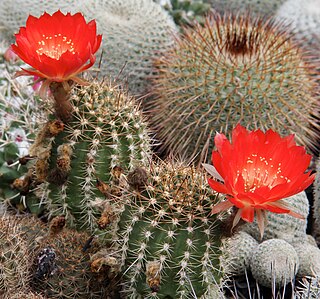
Lobivia hertrichiana is a species of Lobivia found in Bolivia and Peru.

Haageocereus decumbens is a species of Haageocereus found in S. Peru to Chile (Tarapacá)
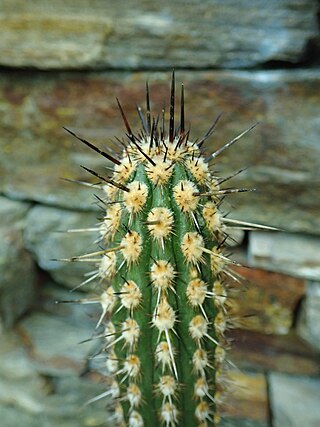
Weberbauerocereus cephalomacrostibas is a species of cactus in the family Cactaceae. It is found in Arequipa Department, Peru and consists of 2 subpopulations.

Armatocereus procerus is a species of Armatocereus found in southern Peru.

Neowerdermannia chilensis is a species of Neowerdermannia found in Argentina, Bolivia, Chile, and Peru.
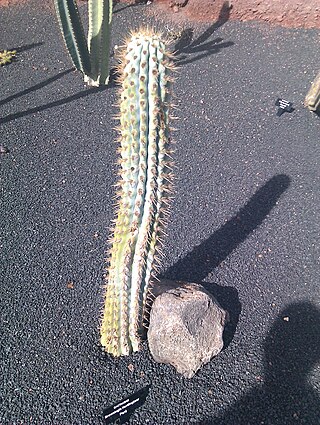
Browningia hertlingiana is a species of Browningia found in Peru.

Matucana weberbaueri is a species of Matucana found in Peru.
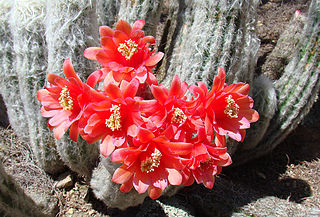
Oreocereus doelzianus is a species of cacti native to Peru.

Haageocereus versicolor is a species of Haageocereus found in Peru.
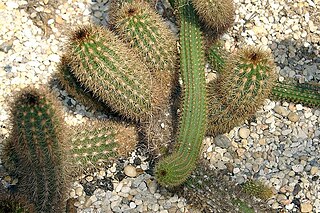
Haageocereus acranthus is a species of Haageocereus found in Peru.
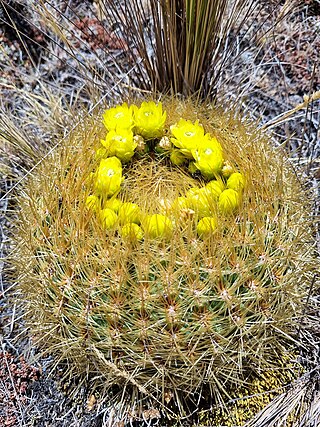
Oroya borchersii is a species of cacti, originating from Peru
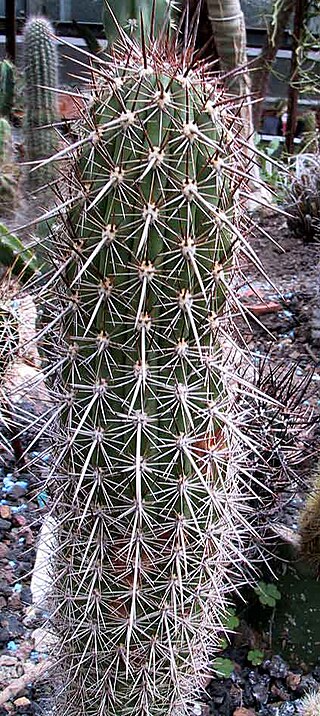
Haageocereus platinospinus is a species of Haageocereus found in Peru.
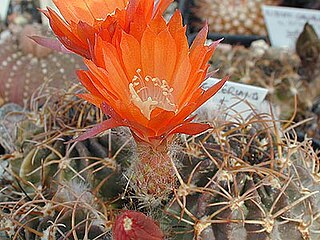
Lobivia tegeleriana is a species of Lobivia found in Peru.

Soehrensia smrziana is a species of Soehrensia found in Argentina.

























